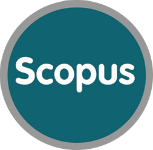Integration of Artificial Intelligence for Enhanced Monitoring and Management of HACCP Critical Control Points
Keywords:
Artificial Intelligence, HACCP, Machine Learning, Food Safety, Critical Control Points, IoT, SustainabilityAbstract
The adoption of Artificial Intelligence (AI) and Machine Learning (ML) in Hazard Analysis and Critical Control Point (HACCP) systems has become a revolutionary strategy of providing food quality, safety, and sustainability. Conventional HACCP systems, although useful in the detection and management of hazards, tend to be manual in nature, sluggish in the interpretation of data and responsive in nature. The recent breakthroughs in AI-based sensing and data analytics, as well as Internet of Things (IoT) technologies, allow real-time observation and predictive evaluation of Critical Control points (CCPs) and, as a result, state the food safety management systems more precise, consistent, and responsive. Research has been shown to demonstrate that AI-based models can properly identify anomalies, predict the possibility of contamination, and assist decision-making dynamic in any food processing setting (Chhetri, 2024; Dhal and Kar, 2025; Revelou et al., 2025). Moreover, transparency is enhanced by the combination of AI and blockchain and digital traceability systems, and the previously stated principle of the so-called Green HACCP supports sustainability levels by promoting safety in the first place (Zarid, 2025; Mu et al., 2024). Although the promise is huge, there are still issues with data standardization, transparency of algorithms, and their acceptance by the regulator. The way forward on food safety assurance by explainable, interoperable, and ethically controlled AI systems should be done through future research. The synthesis highlights the increased role of AI as an intelligent foundation of adaptive, data-driven HACCP systems which enhance safety and sustainability of food supply chains around the world.
Downloads
Published
How to Cite
Issue
Section
License
Copyright (c) 2025 Well Testing Journal

This work is licensed under a Creative Commons Attribution-NonCommercial 4.0 International License.
This license requires that re-users give credit to the creator. It allows re-users to distribute, remix, adapt, and build upon the material in any medium or format, for noncommercial purposes only.

